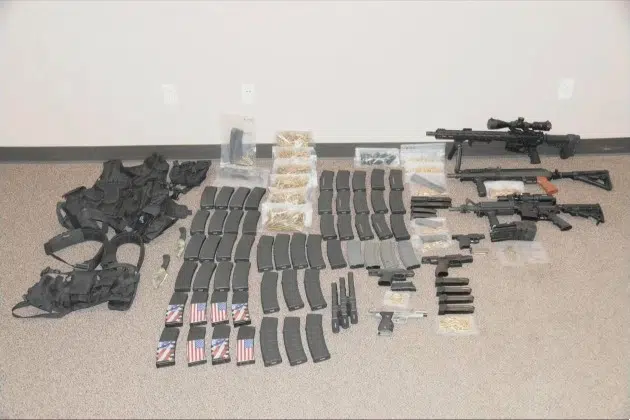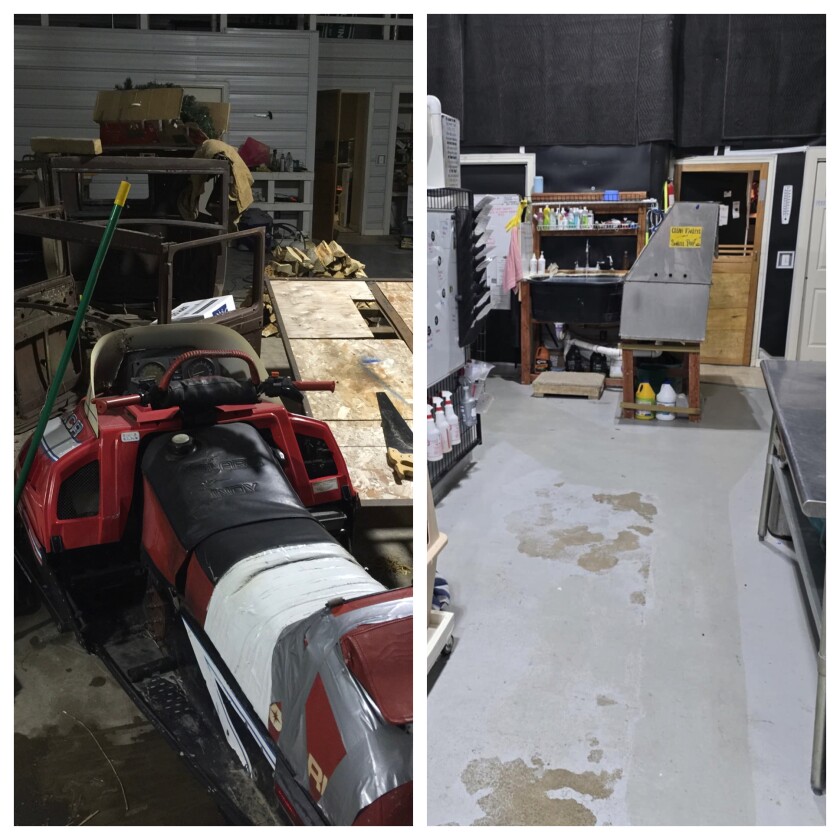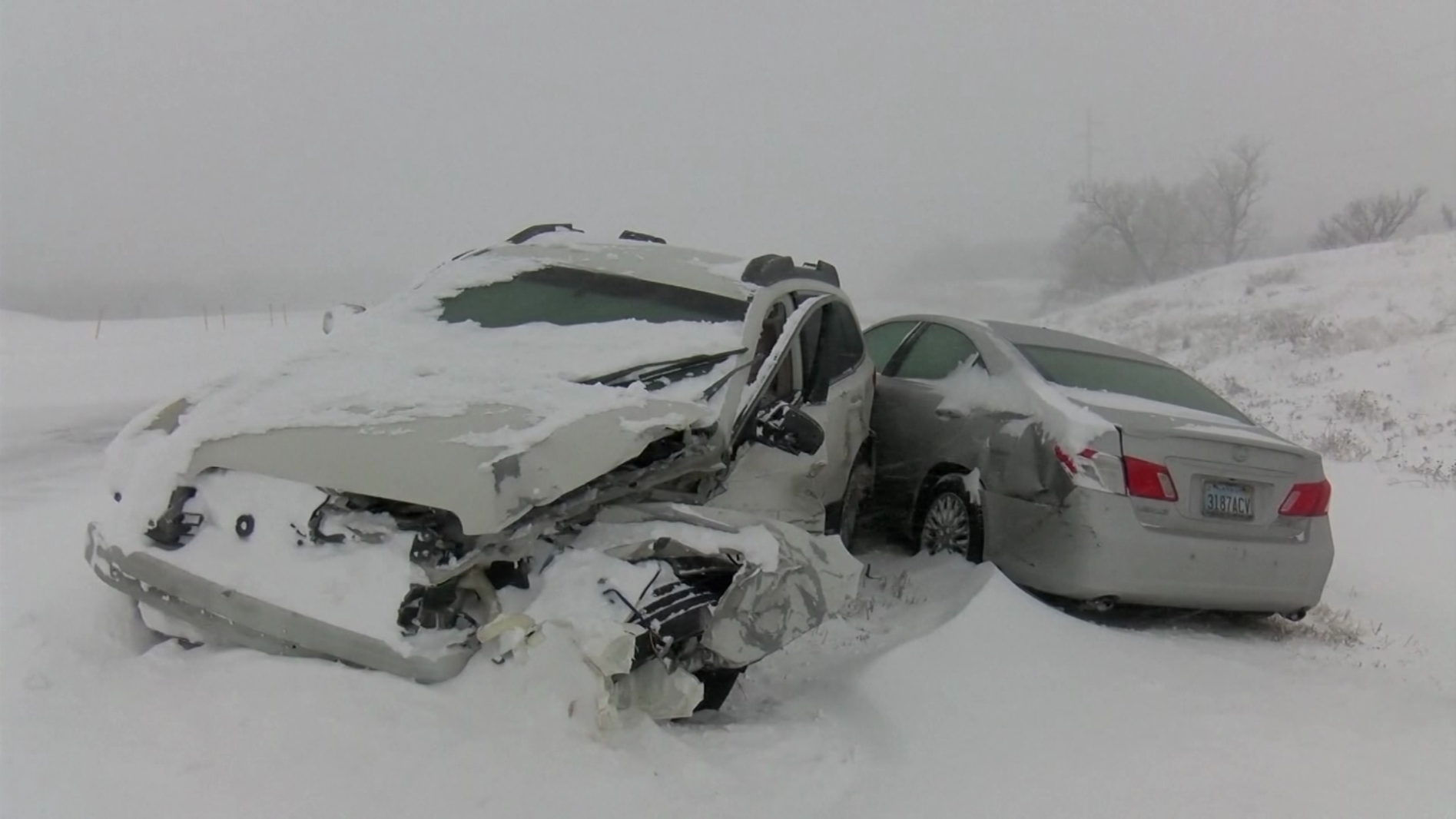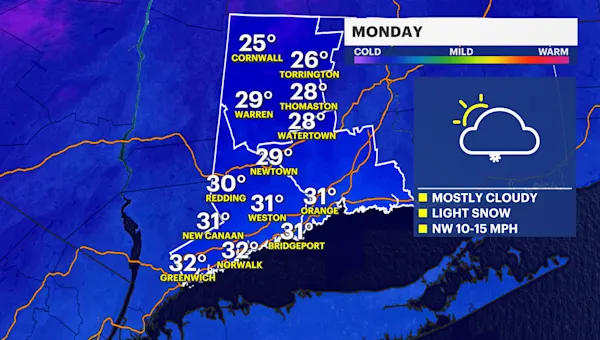North Dakota
Man who ambushed Fargo officers likely had bigger and bloodier attack in mind, attorney general says

FARGO, N.D. (AP) — The heavily armed man who ambushed Fargo police officers investigating a fender bender last week likely had a bigger and bloodier attack in mind, with at least two fairs taking place at the time in and around North Dakota’s largest city, authorities said Friday.
Mohamad Barakat killed one officer and wounded two others and a bystander before a fourth officer shot and killed him, ending the July 14 attack.
Over the past five years, Barakat, 37, searched the internet for terms including “kill fast,” “explosive ammo,” “incendiary rounds,” and “mass shooting events,” state Attorney General Drew Wrigley said Friday during a news conference in Fargo, a city of about 125,000 people. But perhaps the most chilling search was for “area events where there are crowds,” which on July 13 brought up a news article with the headline, ”Thousands enjoy first day of Downtown Fargo Street Fair.”
Had Officer Zach Robinson not killed Barakat, authorities said they shudder to think how much worse the attack might have been. All evidence suggests that Barakat came upon the traffic crash by “happenstance” and that his ensuing ambush was a diversion from his much bigger intended target, Wrigley said.
“The horrible winds of fate sometimes,” he said. “Those events fell into place and fell into his path.”
On the day of the attack, the downtown fair was in its second day and was less than 3 miles (5 kilometers) from the crash scene. It’s unclear if it was the intended target, though, as Barakat also searched for information on the Red River Valley Fair, which was just a 6-mile (10-kilometer) drive from the scene, the attorney general said.
After driving by the fender bender, Barakat pulled into an adjacent parking lot to watch from his parked car, Wrigley said. He said Barakat’s car was loaded with guns, a homemade grenade, more than 1,800 rounds of ammunition, three “largish” containers full of gasoline, plus two propane tanks, one completely filled and the other half-filled not with propane, but with “explosive materials concocted at home, purchased lawfully.”
With police and firefighters busy helping, Barakat watched for several minutes until the officers walked by him, when he lifted a .223-caliber rifle out of his car window and began firing, Wrigley said.
The rifle had a binary trigger that allowed it to fire so rapidly that it sounded like an automatic weapon, he said. A binary trigger is a modification that allows a weapon to fire one round when the trigger is pulled and another when it is released — in essence doubling a gun’s firing capacity. The three officers who were shot had no time to react and fell in rapid succession. He also shot and wounded a fleeing woman, Karlee Koswick, who had been involved in the fender bender, he said.
Robinson, who was badly outgunned but was the only officer at the scene who hadn’t been shot, engaged Barakat in a two-minute shootout. It ended with Robinson shooting and killing Barakat as bystanders crouched nearby.
Wrigley described Robinson as “the last man standing in that blue line at that moment.”
“What he was standing between was not just the horrible events that were unfolding there, but between the horrible events that Mohamad Barakat had envisioned, planned and intended and armed himself for — beyond fully — that day,” he said.
Barakat killed Officer Jake Wallin, 23, who served in Iraq and Afghanistan with the Minnesota Army National Guard, and wounded Officers Andrew Dotas and Tyler Hawes. Wallin and Hawes were so new that they were still undergoing field training.
Barakat was a Syrian national who came to the U.S. on an asylum request in 2012 and became a U.S. citizen in 2019, Wrigley said, adding that he didn’t appear to have any ties to the Muslim community in Fargo. He said Barakat had some family in the U.S., but not in the Fargo area, and that investigators are still looking into his history before he arrived in the country.
In recent years, Barakat amassed his arsenal. And his internet searches about causing mayhem date back to 2018, with periods in which they abated before picking back up, the attorney general said. Nothing from online, Barakat’s phones, the community or his family suggested he had a hatred of the police, he said.
At this stage in the investigation, it seems all of his weapons were purchased legally, and he had many of them in his car on the day of the shooting, Wrigley said. The Bureau of Alcohol, Tobacco, Firearms and Explosives is looking into whether he got any of the gun components illegally.
Wrigley said Barakat was wearing a vest that was “absolutely stuffed” with magazines and that he “was putting the finishing touches on his shooting skills in the last hours before this assault.”
As for the propane tanks, Wrigley said it was “quite dramatic” when the bomb squad detonated them. He suggested the tanks contained something similar to Tannerite, a commercial explosive that can be easily detonated with a shot from a high-powered rifle.
“Obvious motive to kill,” Wrigley said. “I mean, driven by hate. Driven by wanting to kill. Not particularized to some group that we can discern at this moment, not particularized to one individual that we can see.”
Barakat had worked odd jobs, and briefly trained as an emergency responder at a nearby community college. He had no criminal record or social media presence and had so little contact with other people that the only photo law enforcement could provide was a blurry image of him lifted from a video.
He had, however, been reported to something called the Guardian Threat Tracking System. The FBI routinely opens what it refers to internally as assessments — the lowest level, least intrusive and most elementary stage of a terrorism-related inquiry — when it receives unconfirmed information about potentially suspicious behavior.
That information is catalogued in the Guardian system. During the assessment stage of an investigation, FBI agents are permitted to take certain basic investigative steps such as conducting online research or visual surveillance, but more sophisticated tools such as wiretaps cannot be undertaken without additional evidence of wrongdoing.
Mac Schneider, the U.S. attorney for North Dakota, said the Guardian system is a way for members of the public to engage with local law enforcement about “things of concern.” But he provided no additional details.
Whether Barakat had intended to survive the attack was unclear. He wore no body armor but did have a way to monitor what was happening at his apartment from afar, perhaps suggesting he had a plan, Wrigley said.
He added that there was no immediate indication that anyone had helped Barakat.
“There are lone wolves,” Wrigley said. “That’s a real concept.”
Wrigley said Koswick was badly injured and will have a difficult recovery. Zibolski said the wounded officers were briefly able to stand up out of their hospital beds on Thursday.
Meanwhile, a funeral service is planned for Saturday for Wallin, whose body was cremated in his police uniform.
(Copyright 2023 The Associated Press. All rights reserved. This material may not be published, broadcast, rewritten or redistributed.)

North Dakota
NDSU Foundation plans new pregame party in Frisco for Bison fans

FRISCO — The party leading up to the Bison’s attempt to win their 10th national title in 14 seasons is a little different this year.
In past years, the NDSU Foundation has hosted a pep fest in the Frisco area.
This year, they are hosting a tailgate party instead.
“Change is good. I think it is going to allow for some more kids and family time,” said Todd Clark, a North Dakota State University fan from West Fargo who is in Frisco for his sixth title game.
“Because it is a night game, I think it makes a lot of sense to get everybody there right before the game instead of 24 hours before that,” former Bison Steve Sershen said.
Fans will take over a soccer field next to Toyota Stadium on Monday, Jan. 6, ahead of the 6 p.m. kickoff. The event at Dr. Pink Field is a free, family-friendly tailgate party that will include games, kids events, a DJ and food and drinks.
The gates open when the tailgate lot opens at 1 p.m. and goes until 4 p.m.
The traditional team walk will take place at 3:15 p.m., right next to the tailgate party.
“The strength of the Herd is the Bison and the strength of the Bison is the Herd, so how do we make sure we do a pregame event that gets everybody together and ready to go into that stadium and absolutely destroy Montana State and make sure everyone is there?” Bethany Hardwig with the NDSU Foundation said of the mindset behind the change in the event.
After the Bison punched their ticket to Frisco, the NDSU Foundation conducted a survey. With the game being on Monday night for the first time, they wanted to know when fans would be in town.
Hardwig said many people would be driving down and arriving Sunday afternoon or early Monday, and the NDSU Foundation wanted an event that those fans could attend.
“That they don’t feel like they missed the thing was really important to us,” she said.
Attendance at pep fests in recent years noticeably declined as Bison Nation spread out across the Frisco area to enjoy their favorite watering holes and restaurants.
“The Bison are a huge part of what we do on that football field, so making sure people are gathered, ready and hyped is our obligation to our team,” Hardwig sad. “Our team has made it this far — Are we ready to yell loud and get them the rest of the way?”
Matt Henson is an Emmy award-winning reporter/photographer/editor for WDAY. Prior to joining WDAY in 2019, Matt was the main anchor at WDAZ in Grand Forks for four years.
North Dakota
NDGF gives preview of 2025 seasons and reflects on 2024
BISMARCK, N.D. (KFYR) – 2024 was a great year for wildlife activities in North Dakota. North Dakota Game and Fish preview what’s in store for 2025.
Whitetail deer numbers in 2024 were still slowly rebounding from previous bad winters and disease, but upland game bird numbers looked pretty good.
“I think hunters experienced a really good upland game bird season, especially the combination of pheasants, sharptailed grouse, partridge,” said Jeb Williams, Director of the North Dakota Game and Fish Department.
Fishing continues to be good on many waterbodies in North Dakota.
“Fisheries, again, another great year. I think one of the challenges of open water season in 2024 was that we had an exceptional open water 2023. So the expectations I think were really high and sometimes that’s very hard to meet,” said Williams.
Weather always plays an important role in wildlife populations.
“So 2024 started out really good as far as moisture-wise, but in a lot of areas of the state, got pretty tough come middle part of July. And that’s definitely has carried into where we’re at now. So it’s going to be have to be something that we will have to monitor and know that it can and have some impacts on wildlife if that drought persists,” said Williams.
The North Dakota Game and Fish Department is always looking to partner with private landowners to create wildlife habitat and hunting access.
“Working in partnership with those individuals and for voluntary conservation programs where maybe the piece of property isn’t as productive from an agriculture standpoint, but has some opportunities and benefits when it comes to conservation,” said
And how are things looking heading into 2025 for our state’s wildlife populations?
“Numbers-wise from bird perspective are very good. Obviously, from a big game perspective, deer, we’re at a period of time where we’re kind of in rebuilding mode for some of these areas. But there’s some opportunities out there if people are willing to take advantage of things that are currently on the high of the roller coaster ride that we have in North Dakota with some of our outdoor opportunities,” said Williams.
Another highlight in 2024 was the PLOTS program, which added an additional 40,000 acres for hunting access.
Copyright 2025 KFYR. All rights reserved.
North Dakota
Fans worldwide give over $372K to save North Dakota pet rescue property — and the money keeps coming

ST. JOHN, N.D. — Keith Benning still can’t really believe it.
When he posted a video plea Dec. 23 to ask supporters of his Turtle Mountain Animal Rescue to donate $300,000 so the organization could buy the rescue’s building and land, he could barely say the number out loud.
Surely, that was an impossible request, he thought. Obviously, this was more than he could hope to raise — especially by the end of January. But it was the bare minimum needed to buy the property before the landlords sold it to someone else.
Without the building, Benning said in the video while cuddling a litter of tiny puppies, the nonprofit would have to close.
But he underestimated the following of this “accidental rescue,” which started 11 years ago when Benning took home two skinny, sickly strays. Today, the Turtle Mountain Animal Rescue has completed over 8,000 rescues, placed pets in 35 U.S. states plus two Canadian provinces and amassed a worldwide social media following of over 600,000.
By New Year’s Eve, over $200,000 in donations had flowed in. By the morning of Jan. 1, the rescue met its $300,000 goal.
Still, the donations kept coming — to the tune of over $372,000 by Friday, Jan. 3.
“I’m shocked, amazed, awed and very appreciative of it,” Benning told The Forum. “The generosity of people in such a small amount of time has been amazing. I’m still nervous because the deal is not done yet, but it puts us in a better place because every dollar we go over is less we have to take out of savings.”
Contributed / Turtle Mountain Animal Rescue
Benning figures a combination of donations and the rescue’s savings will be needed to buy the rural Rolla, North Dakota, property, which will cost substantially more than $300,000.
Donors can now opt to earmark their gifts for badly needed upgrades and repairs inside the 2,400-square-foot building that houses its operations. “We use a lot of duct tape and zip ties,” he said. “This can go toward building more permanent things.”
Poverty + vet shortage = overpopulation
Turtle Mountain Animal Rescue has come a long way since 2014, when law enforcement officers found two malnourished, mange-riddled dogs in the freezing cold.
Benning, then a Rolette County deputy, volunteered to take them home.
Word quickly spread about the new deputy’s soft spot for homeless animals. His one-bedroom house became a de facto sanctuary for sick, abandoned and unwanted animals. “It kind of exploded,” he said.
Benning learned as he went along. “I really didn’t know anything about rescue,” he said.
But he saw strays were rampant in the remote area. The closest rescue was 118 miles away. The only animal control was a dog catcher, who euthanized all stray animals caught because there were so many of them.

Contributed / Turtle Mountain Animal Rescue
The area’s isolation, coupled with widespread poverty fueled by a lack of job opportunities and public transportation, led to animal overpopulation. The locals actually already rescued many animals, he said, because so many of them took in these strays as pets. But local vets were scarce and people couldn’t afford veterinary services, so many animals weren’t spayed or neutered.
“Anytime you get a combination of lack of affordable vet care and a situation of higher jobless rate, you’re going to have animal overpopulation,” he said.
Other independent rescuers before him had tried to help but typically burned out within a year. Benning recalls a dispatcher pulling him aside to say, “Hey, you’re a good guy and what you’re trying to do is a good thing. I have lived here for 40 years, and I have seen so many people try, then burn out. Don’t put yourself through it; just accept it for what it is.”
Benning responded by betting the dispatcher a 12-pack of beer that he would build an animal shelter. “I’m not buying him that beer,” Benning says today.
Adds pet food bank, neuter clinics
By 2015, Turtle Mountain Animal Rescue became an official nonprofit. A year later, Benning was able to move the operation into a 40-by-60 building on more than 200 acres of land northwest of Rolla.
After a major cleanup, it was furnished with donations, cast-off equipment and garage sale finds. A 1990 Dodge Ram van with holes in the floor transported animals to and fro.

Contributed / Turtle Mountain Animal Rescue
There was no lease. The out-of-state landlord just wanted someone to live there and keep an eye on the property. But Benning knew the location could be sold at any time.
“Luckily, the owners have been really cool with us,” he said. “But I’ve lived in fear for years that we were going to get a call that said, ‘Ok, we’re going to need you to go.’”
All the while, Turtle Mountain Animal Rescue grew,
adding a network of 150 volunteers,
offering advanced first-aid to animals and rescuing cats and horses as well as dogs. They also bring a Kansas veterinarian to the area four times a year to conduct free spay-and-neuter clinics and partner with the online pet-product company Chewy and the Humane Society to offer a pet food bank when owners need temporary help.
As a contingency plan, the rescue invested in a 30-acre plot of land and started drawing up plans for a new facility. But the process took a long time. They had no experience in proper shelter design until Benning could visit shelter-medicine facilities in Wisconsin and Berkeley, California. It was hard to find contractors to work in the remote area. And numerous efforts to drill well water on the new property failed to find water that wasn’t contaminated.
That means they own a shell of a building on the site, which has no electricity, water or HVAC.
So when the call finally came in December to tell them the rescue’s facility would be sold, Benning knew they were in no position to relocate.
But there was light on the horizon. As soon as Benning’s first video dropped, Turtle Mountain Animal Rescue’s supporters rallied. A special Facebook group, called We Love Turtle Mountain Animal Rescue, was instrumental in spreading the word and generating donations. “They’ve just been working like crazy, and it’s really amazing the kindness and generosity of people,” he said.
Donors stepped up with matching funds. People from as far away as the United Kingdom and Italy watched the video. “The weird thing is the following overseas. We have people that watch the videos in 52 different countries,” he said.
Benning believes Turtle Mountain Animal Rescue fans are attracted to the transparency of the operation. “We don’t just show the good stuff but the bad stuff too. We show a lot of behind-the-scenes and how much work it is,” he said. “I think people appreciate that: being allowed to be let in and see how things work.”
He admits it’s been a tough road and he’s felt burned out many times. “I have wanted to give up, to quit, to go back to having hobbies and free time without the looming dread that I’m failing the animals because I’m only working 14 hours instead of 16 hours.”
But something always arises — a puppy battling mange or an owner who was able to save their dog — to keep him moving forward.
And so it looks like he won’t be buying anyone that 12-pack anytime soon. “That slowly transformed into a saying I came up with: ‘You can’t fail if you don’t quit,’” he said. “So don’t quit.”
Give to Turtle Mountain Animal Rescue at
https://shorturl.at/ZIcC2.
-

 Health1 week ago
Health1 week agoNew Year life lessons from country star: 'Never forget where you came from'
-
/cdn.vox-cdn.com/uploads/chorus_asset/file/24982514/Quest_3_dock.jpg)
/cdn.vox-cdn.com/uploads/chorus_asset/file/24982514/Quest_3_dock.jpg) Technology1 week ago
Technology1 week agoMeta’s ‘software update issue’ has been breaking Quest headsets for weeks
-

 Business5 days ago
Business5 days agoThese are the top 7 issues facing the struggling restaurant industry in 2025
-

 Culture5 days ago
Culture5 days agoThe 25 worst losses in college football history, including Baylor’s 2024 entry at Colorado
-

 Sports5 days ago
Sports5 days agoThe top out-of-contract players available as free transfers: Kimmich, De Bruyne, Van Dijk…
-

 Politics3 days ago
Politics3 days agoNew Orleans attacker had 'remote detonator' for explosives in French Quarter, Biden says
-

 Politics3 days ago
Politics3 days agoCarter's judicial picks reshaped the federal bench across the country
-

 Politics1 day ago
Politics1 day agoWho Are the Recipients of the Presidential Medal of Freedom?


















